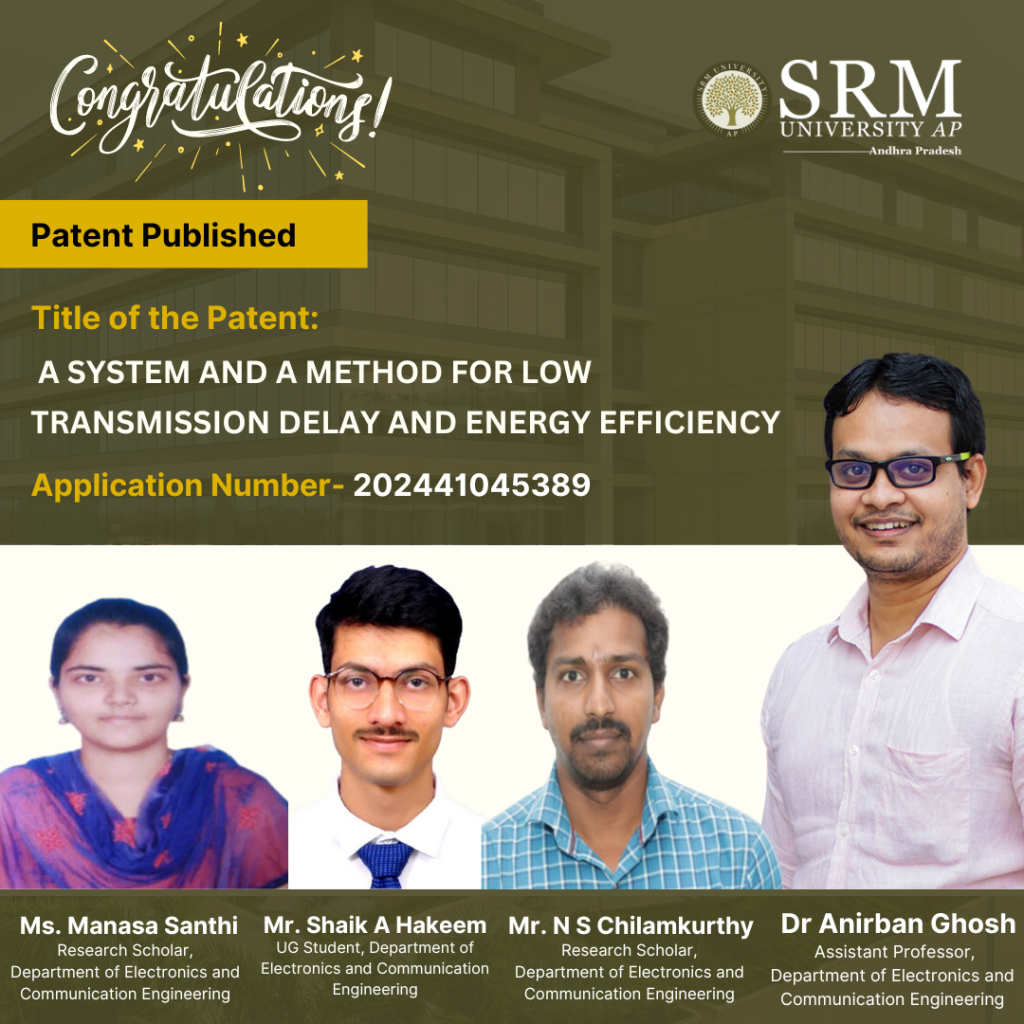
The Department of Electronics and Communication Engineering is delighted to announce that Assistant Professor Dr Anirban Ghosh, PhD scholars Mr Naga Srinivasarao and Ms Manasa Santhi, and BTech student Mr Sk Abdul Hakeem have filed and published their patent, “A System and a Method for Low Transmission Delay and Energy Efficiency,” with Application No: 202441045389. The research cohort has demonstrated groundbreaking research on integrating Small-World Characteristics (SWC) into Low-Power Wide-Area Networks (LPWANs) through Reinforcement Learning.
Abstract
To support the rapid growth of Internet of Things (IoT) applications, networking technologies like Low-Power Wide-Area Networks (LPWANs) are evolving to provide extended network lifespan and broader coverage for Internet of Things Devices (IoDs). These technologies are highly effective when devices remain stationary under static conditions. However, practical IoT applications, ranging from smart cities to mobile health monitoring systems, involve heterogeneous IoDs that move dynamically, leading to changing network topologies. Typically, dynamic networks use multi-hop data transmission schemes for communication, but this method presents challenges such as increased data latency and energy imbalances. To address these issues, this patent introduces a novel approach that integrates recent advancements in social networks, specifically Small-World Characteristics (SWC), into LPWANs using Reinforcement Learning. Specifically, the SWCs are embedded into heterogeneous LPWANs through the Q-learning technique. The performance of the developed heterogeneous Small-World LPWANs is then evaluated in terms of energy efficiency (including the number of alive and dead IoDs, as well as network residual energy) and data transmission delay within the network.

Explanation of Research in Layperson’s Terms
The existing or the present technology moves around the applications that are either static or dynamic in nature, but the current invention considers a realistic IoT application that contains both static and dynamic nodes in the network. However, maintaining low data transmission delay and high network longevity over such a heterogeneous network is a challenge. By integrating SWCs over the developed heterogeneous networks using Q-learning technique helps in minimizing the data transmission delay and improves the network lifetime (energy efficient data transmission).
Practical Implementation of the Research
Applications that contain both static and dynamic nodes, such as smart health care systems, smart environmental monitoring systems, real-time traffic monitoring systems, and smart cities and homes, require less data transmission delay and high network longevity.
Collaborations
- Dr Om Jee Pandey – Assistant Professor, Department of Electronics Engineering, Indian Institute of Technology (BHU) Varanasi
- Dr Satish Kumar Tiwari – Assistant Professor, IIITDM Jabalpur, India
In the next phase of research, the reserach team will work towards investigating how the energy efficiency and other quality of service of smart devices in an IoT setting can be improved if they are completely mobile.

